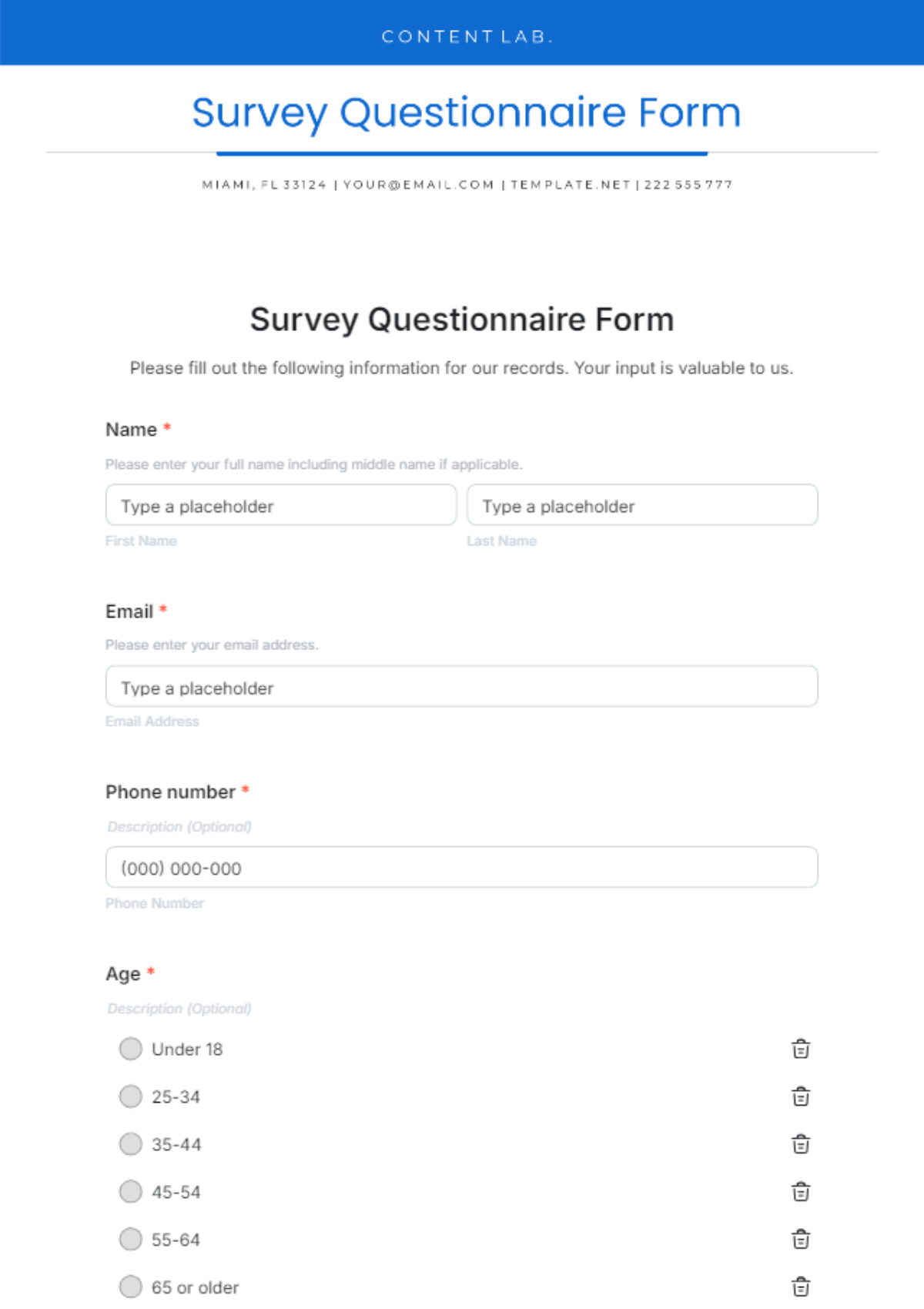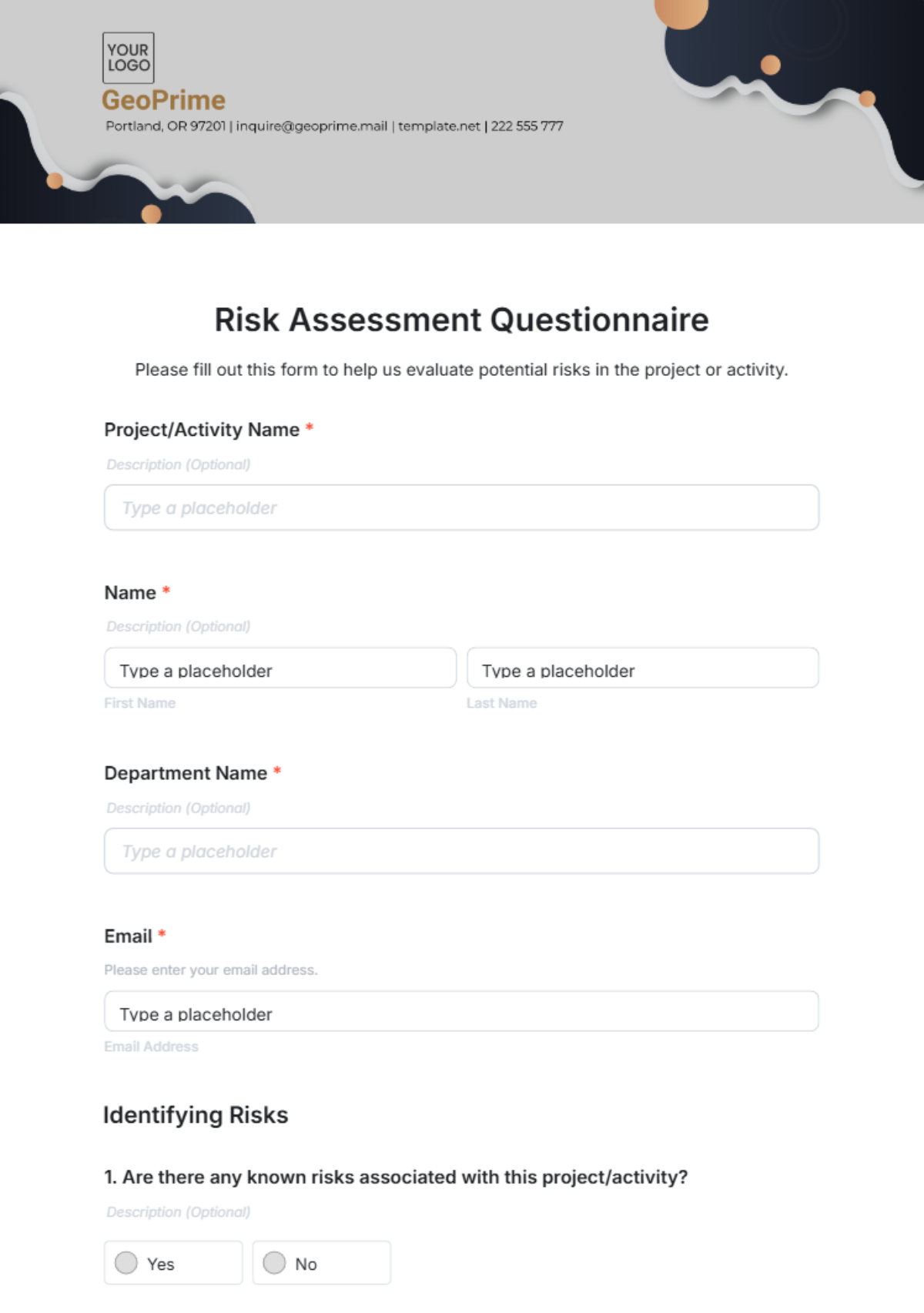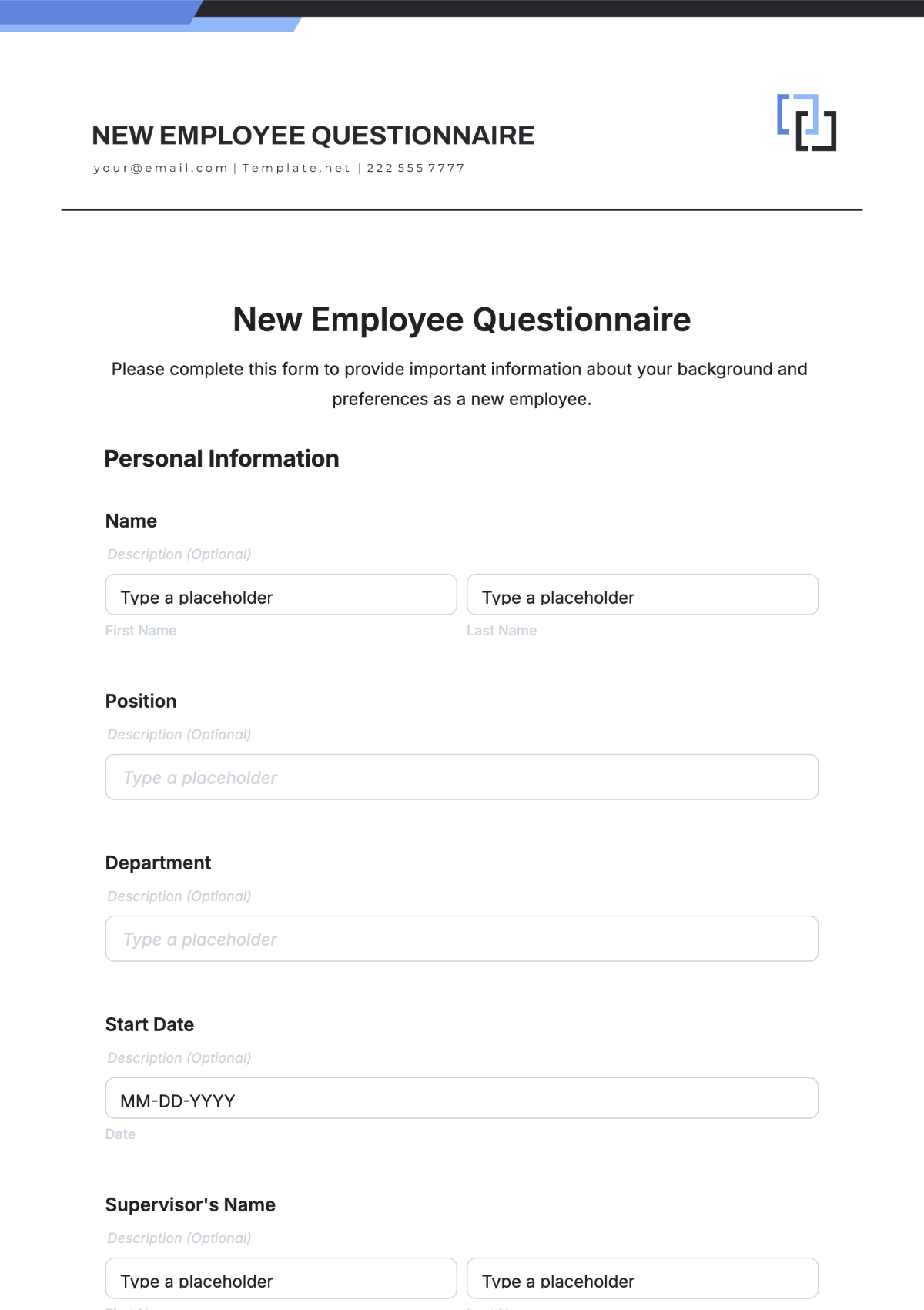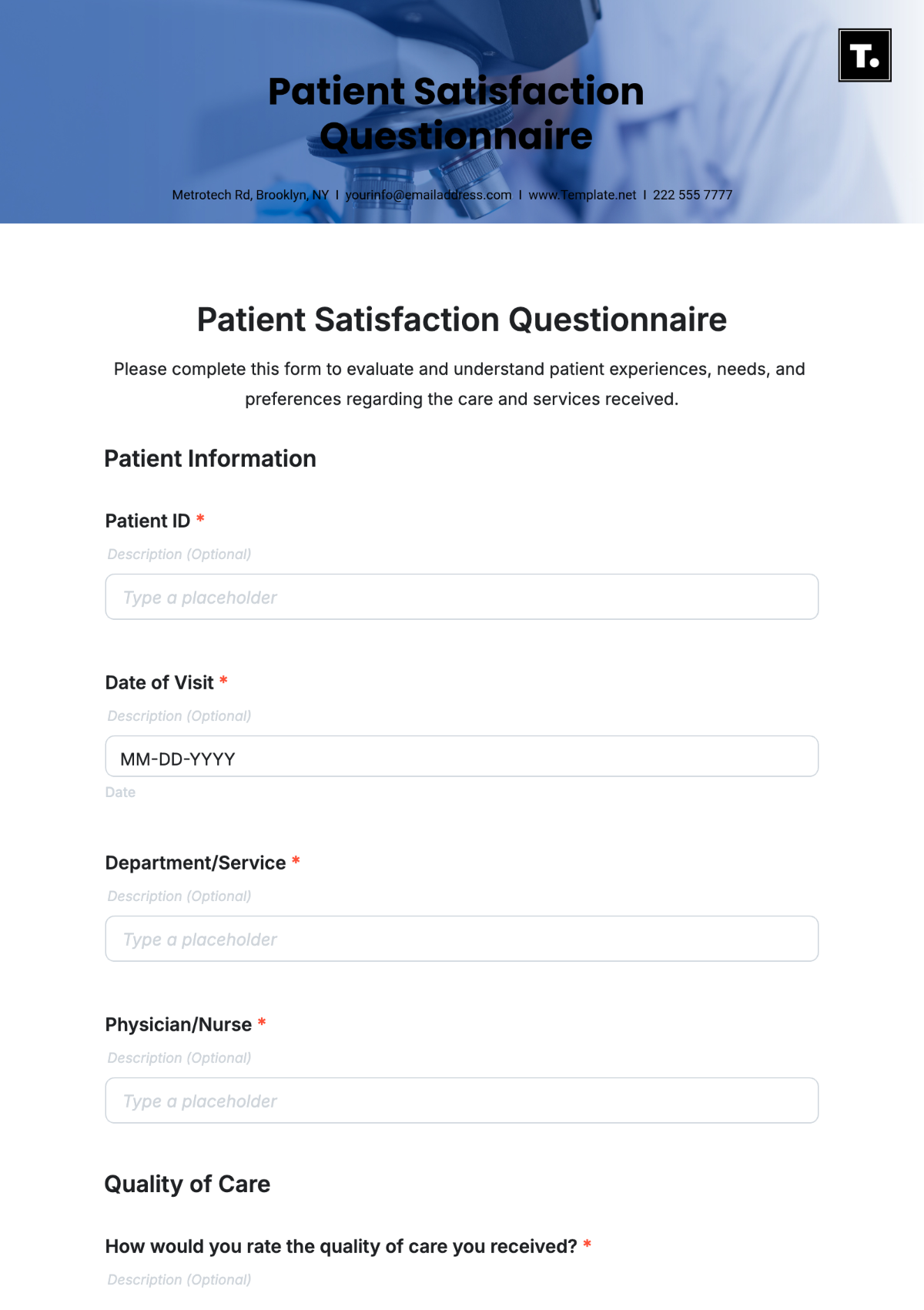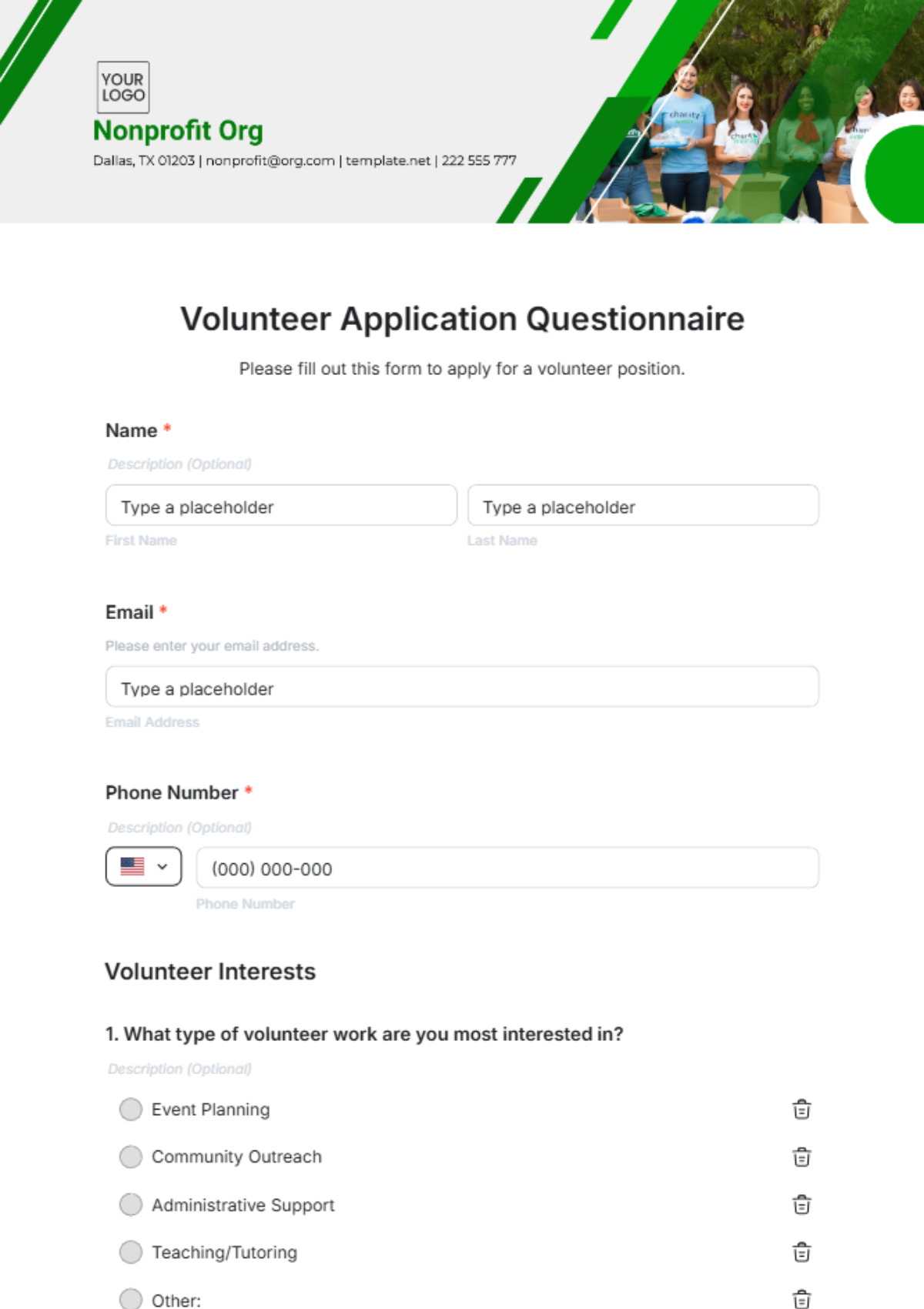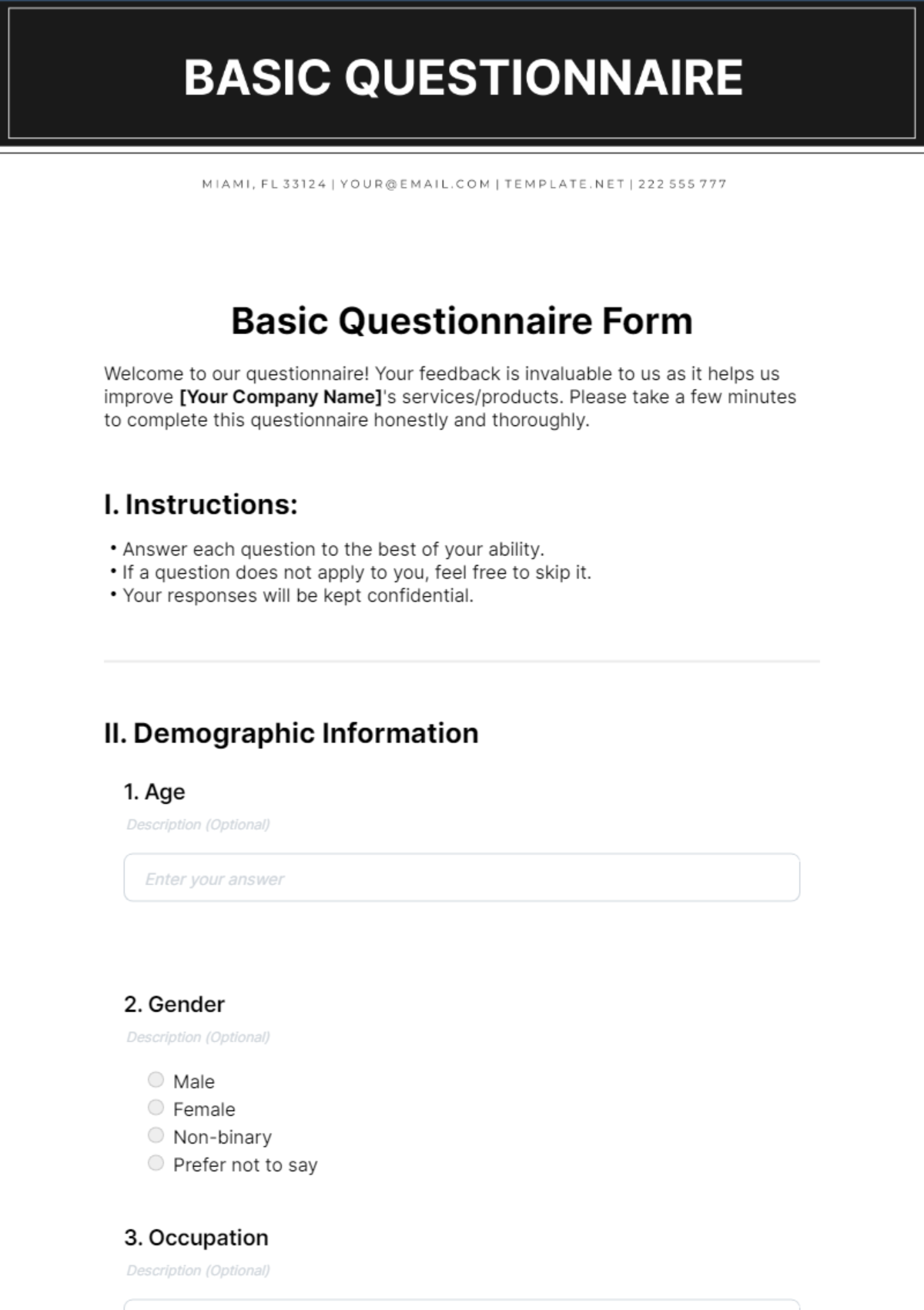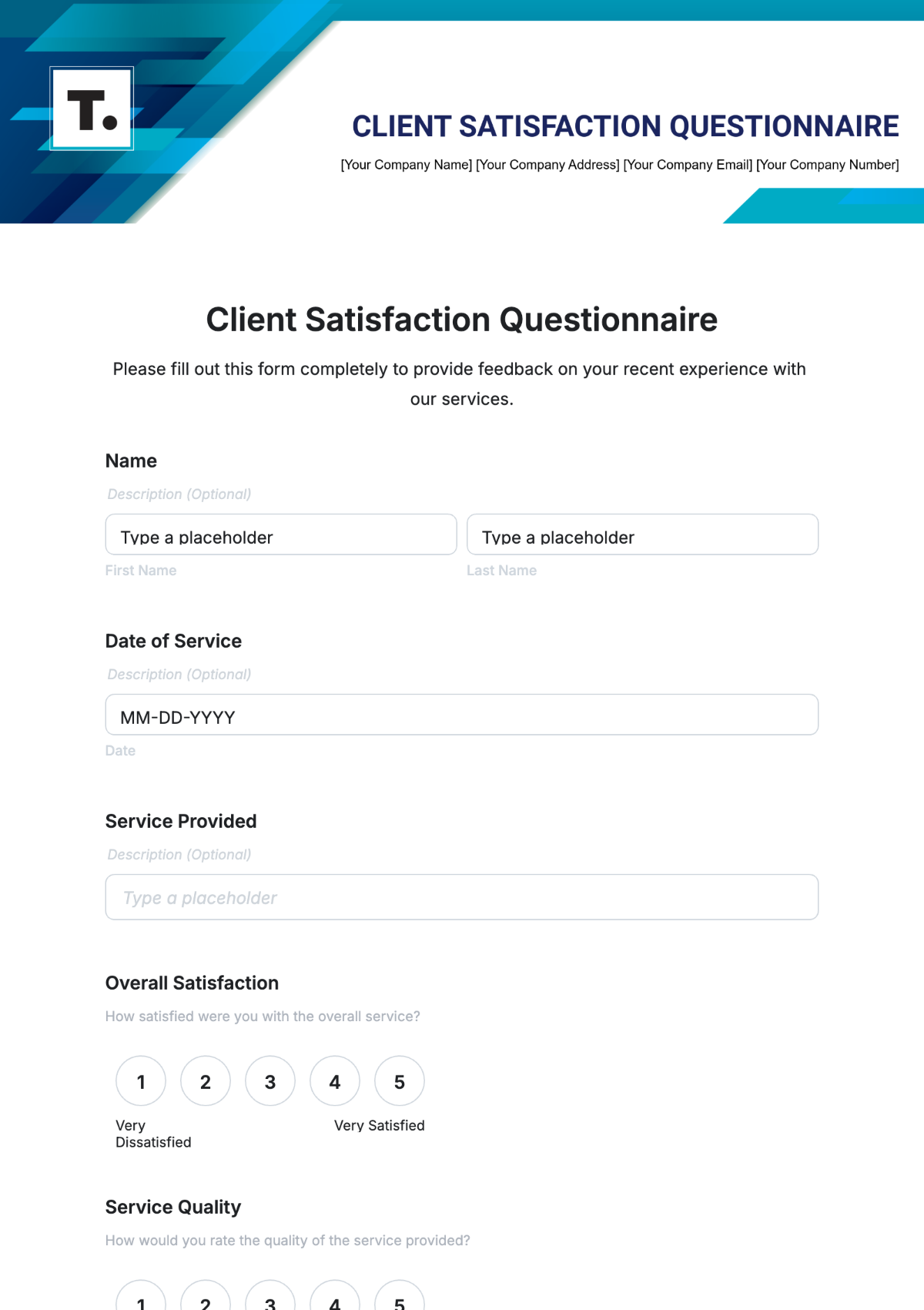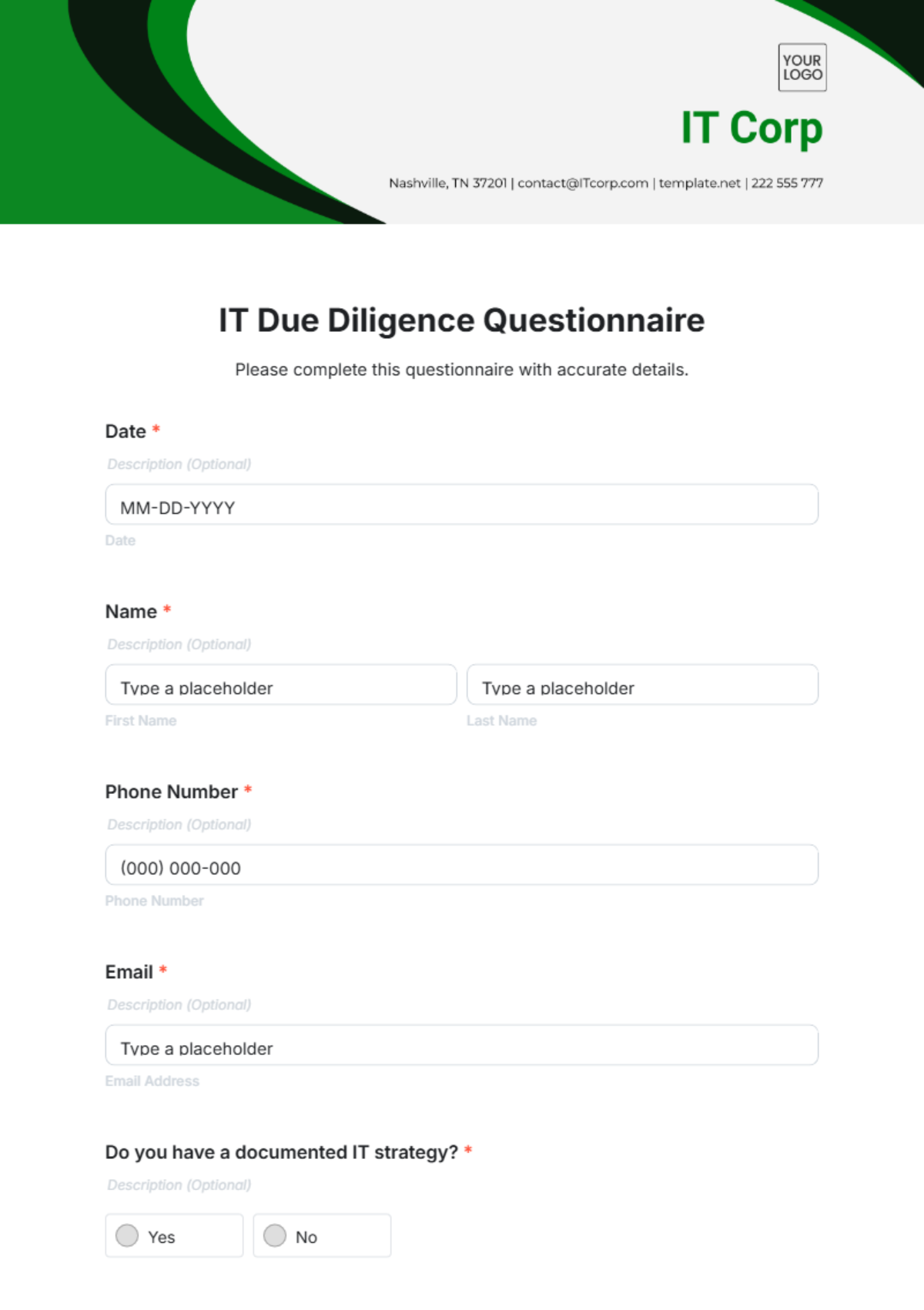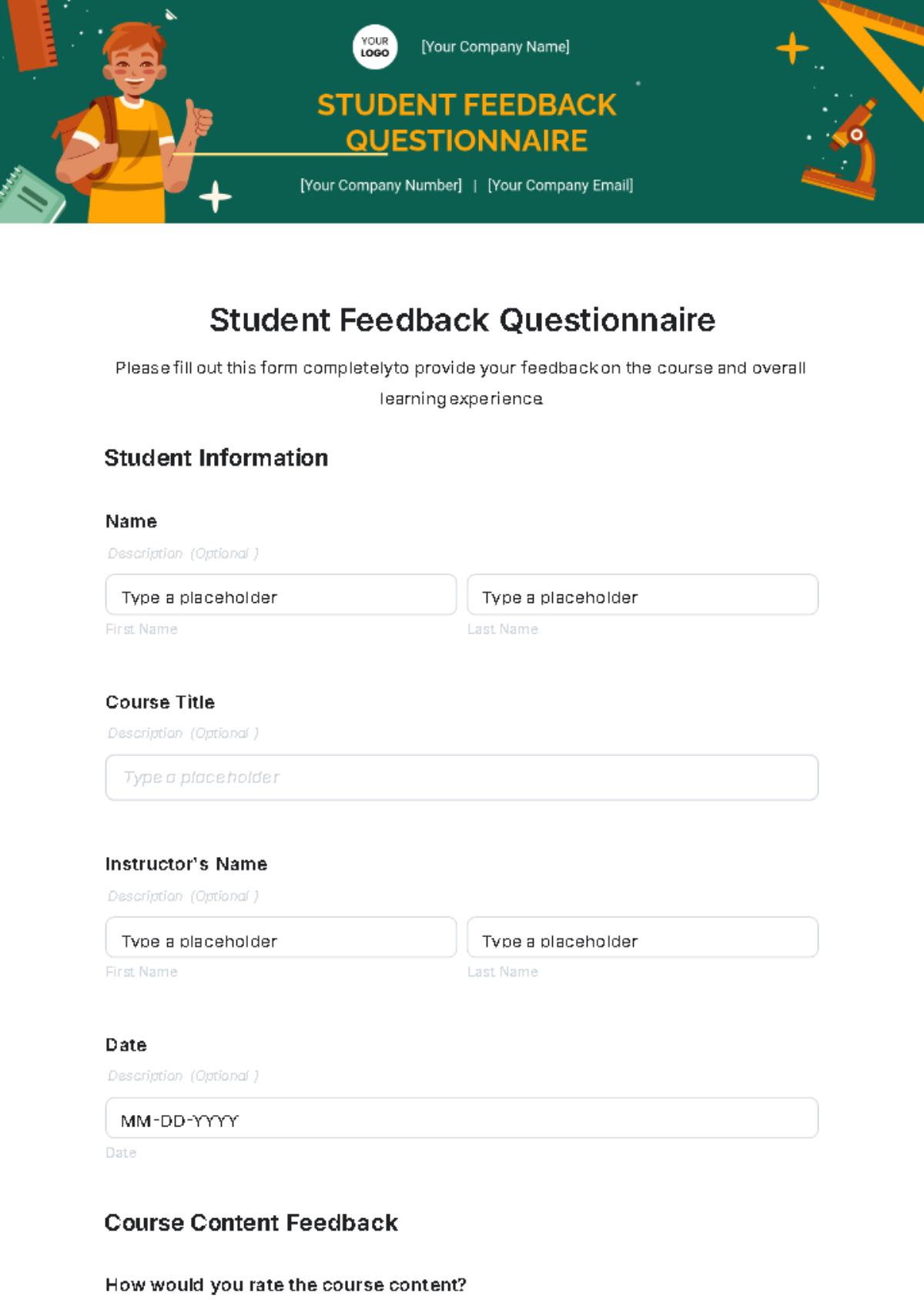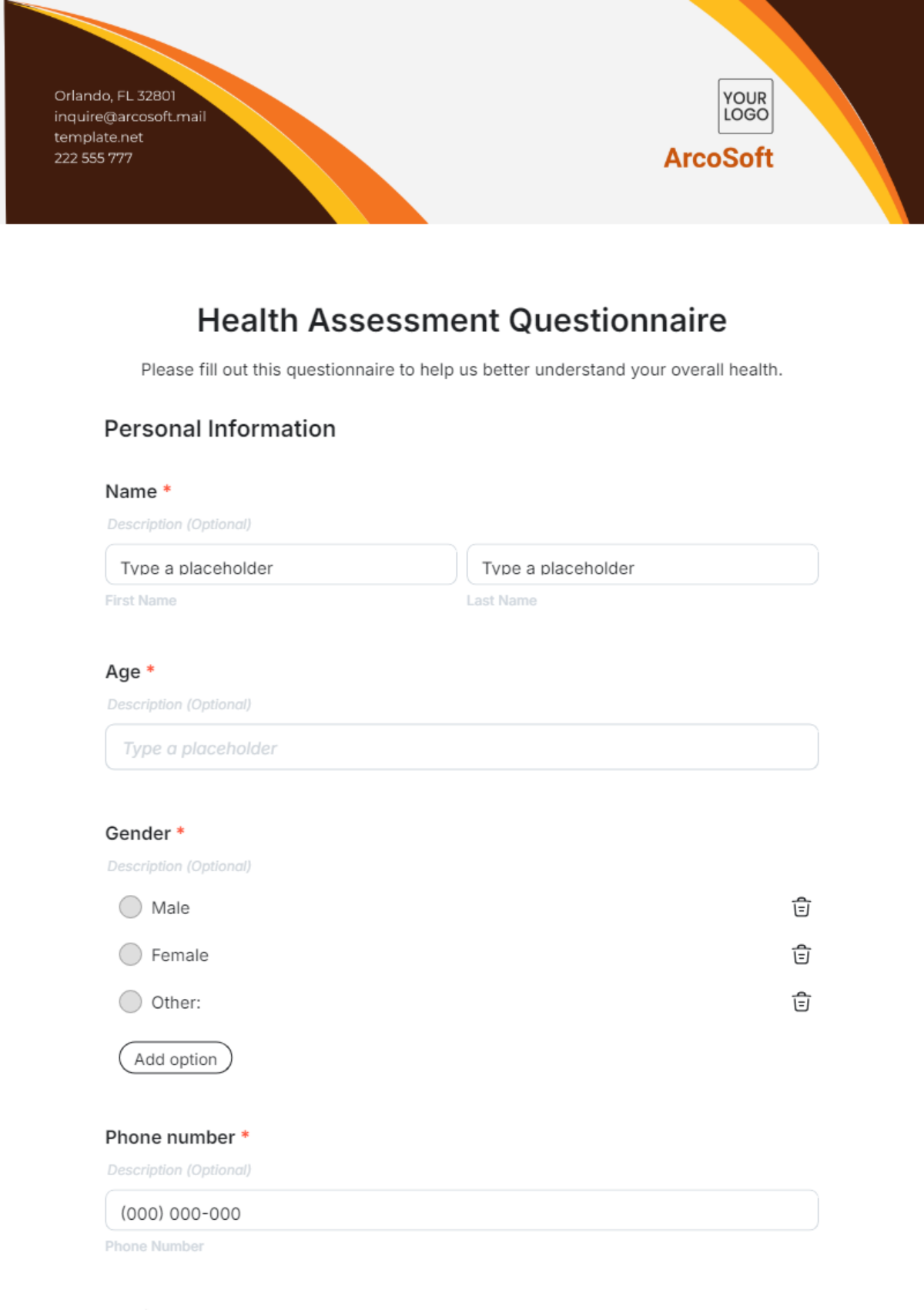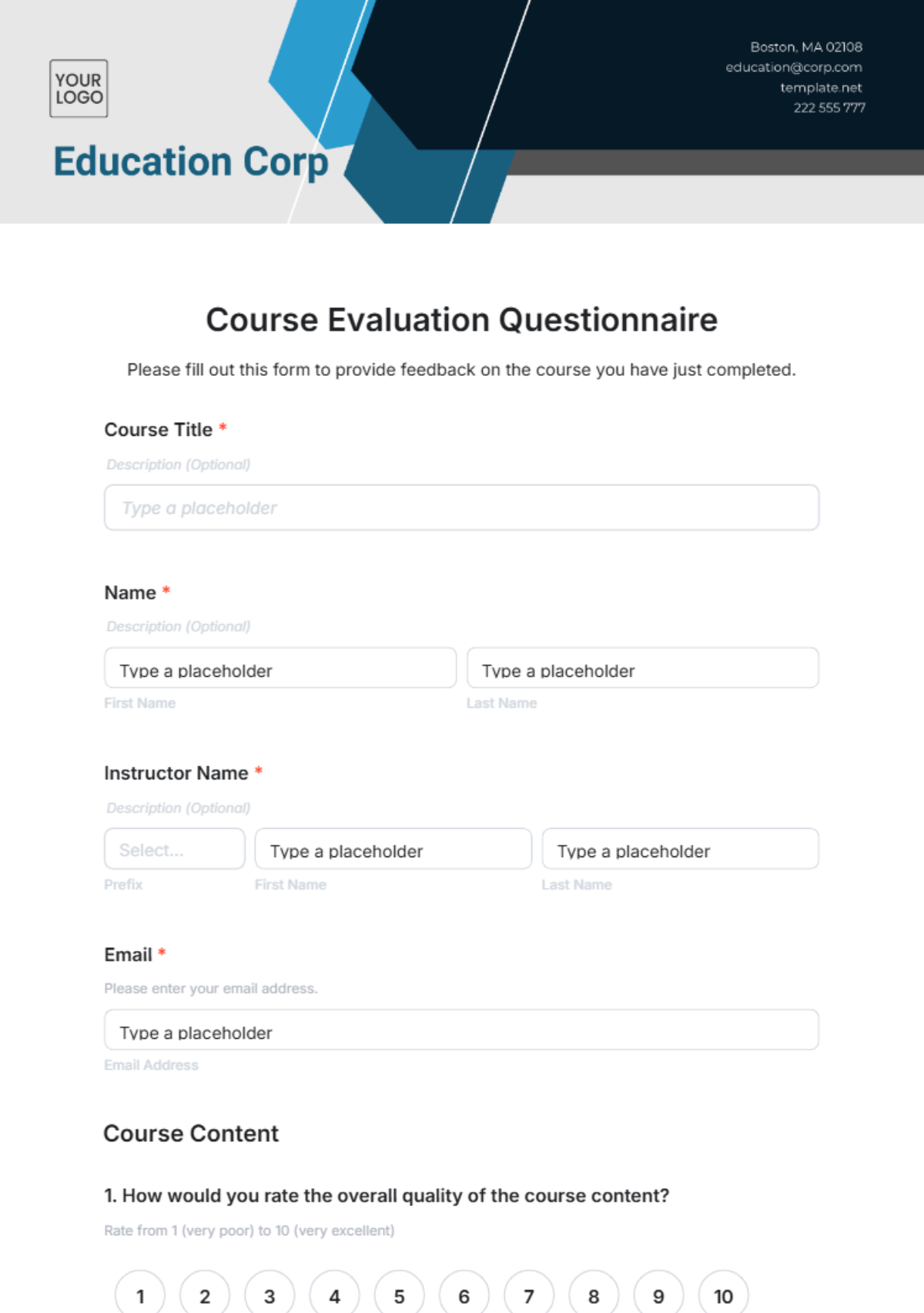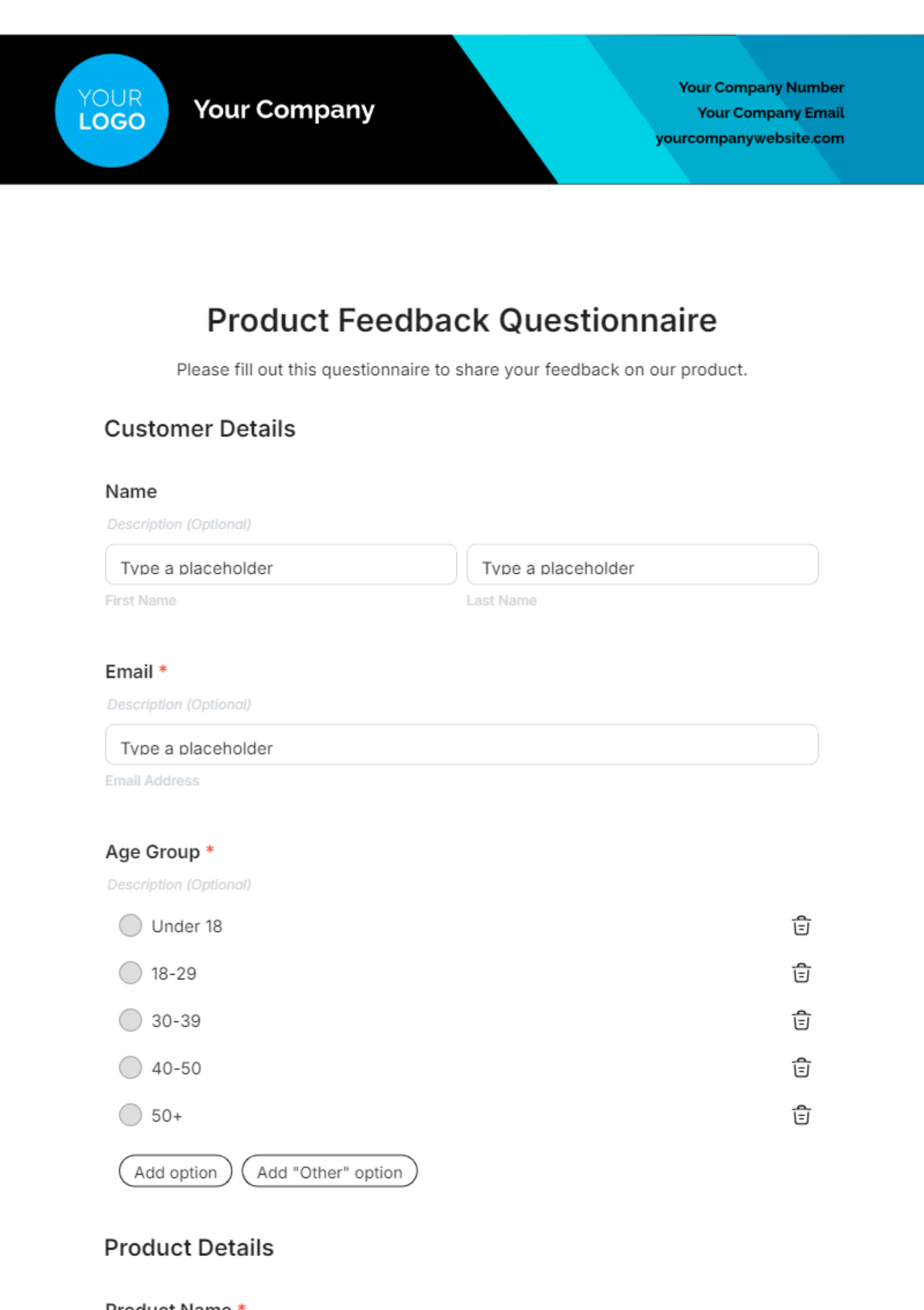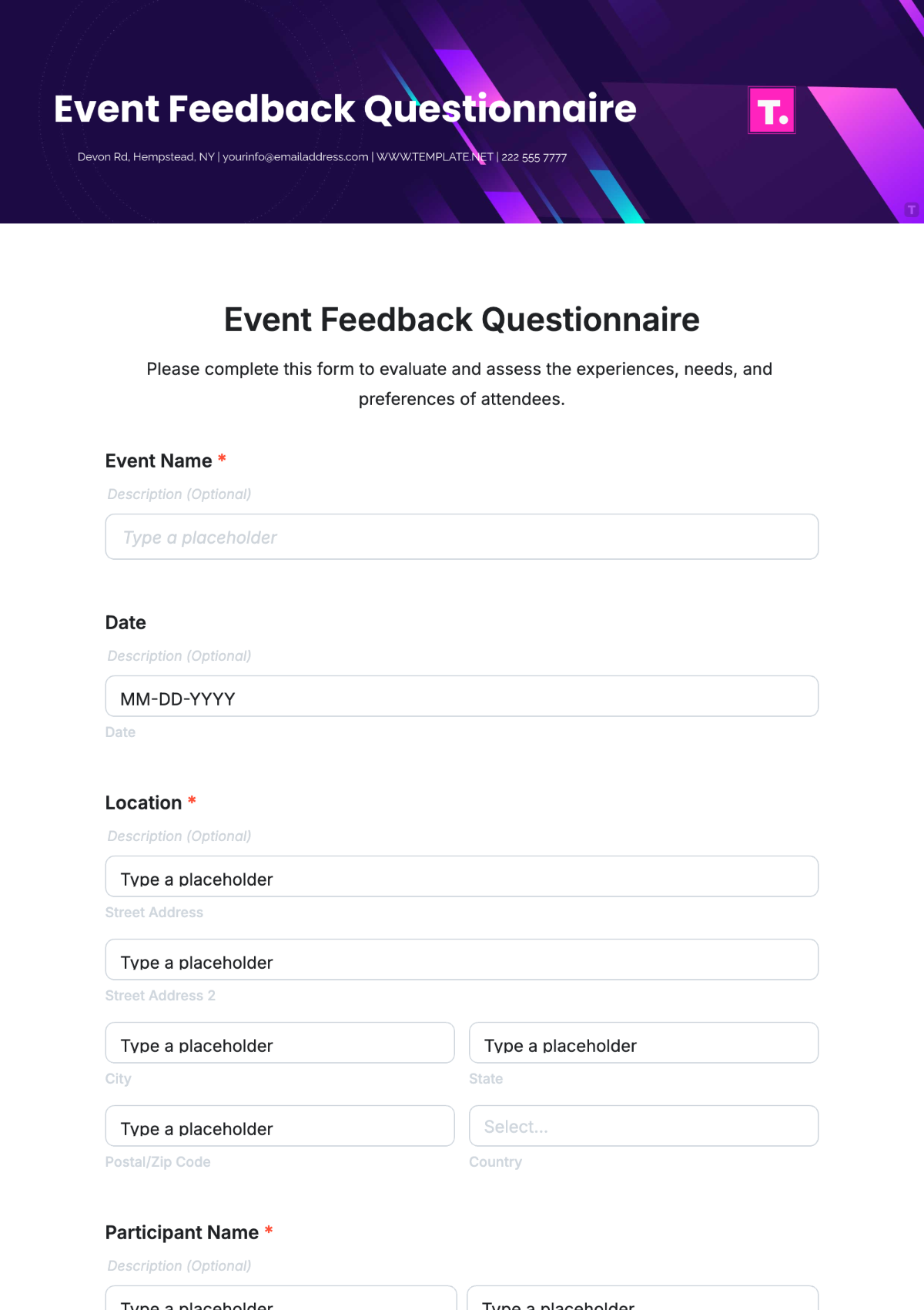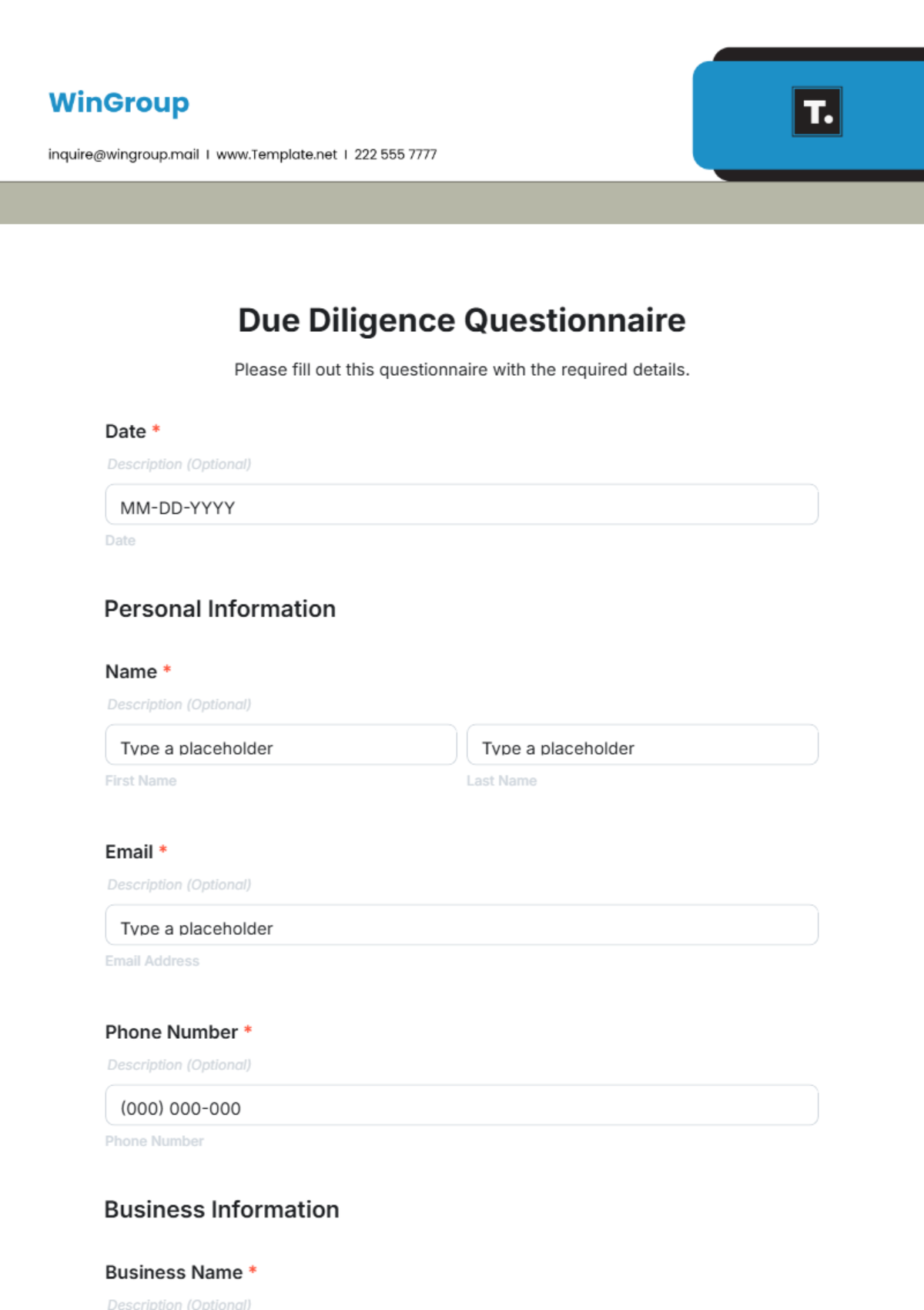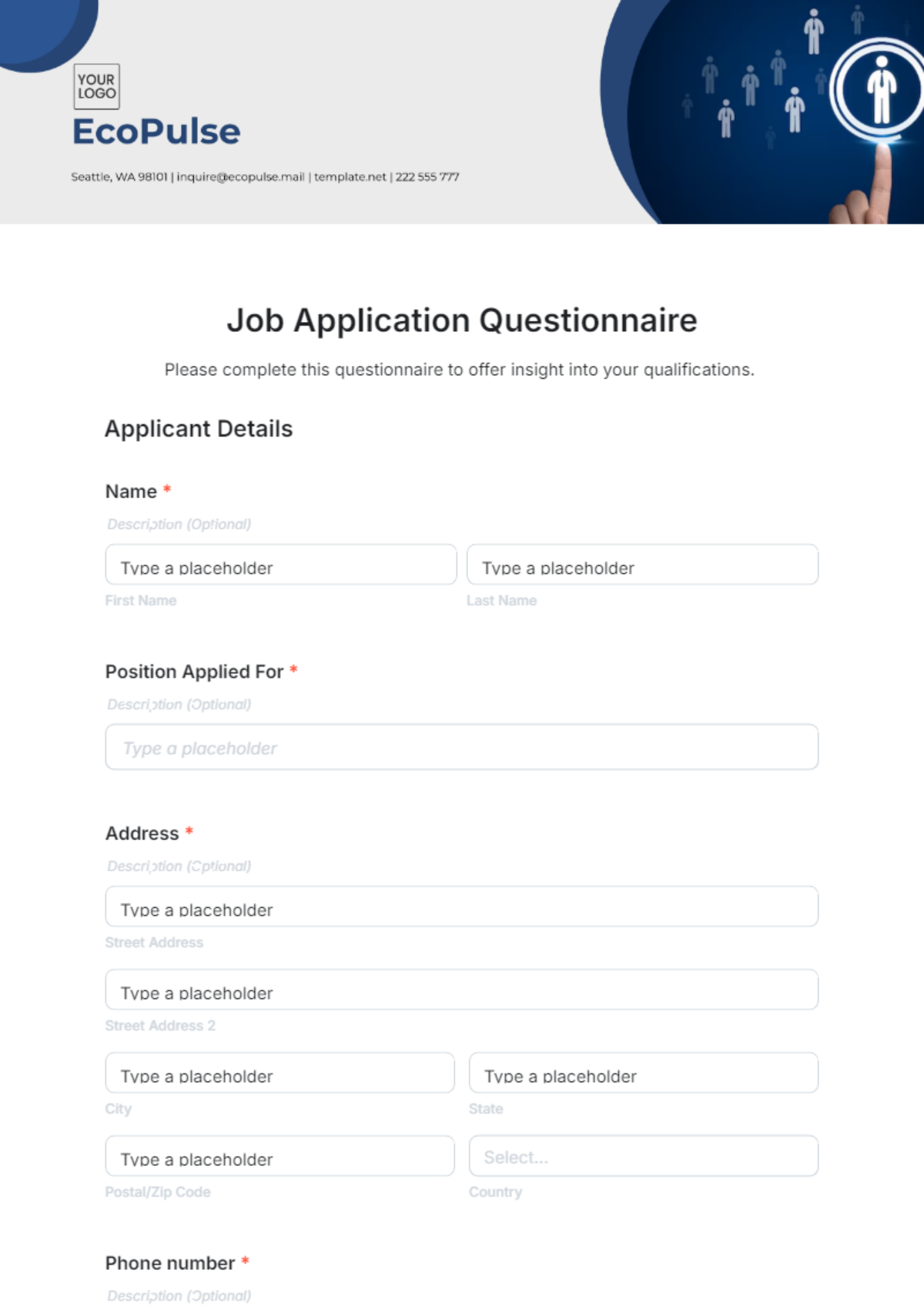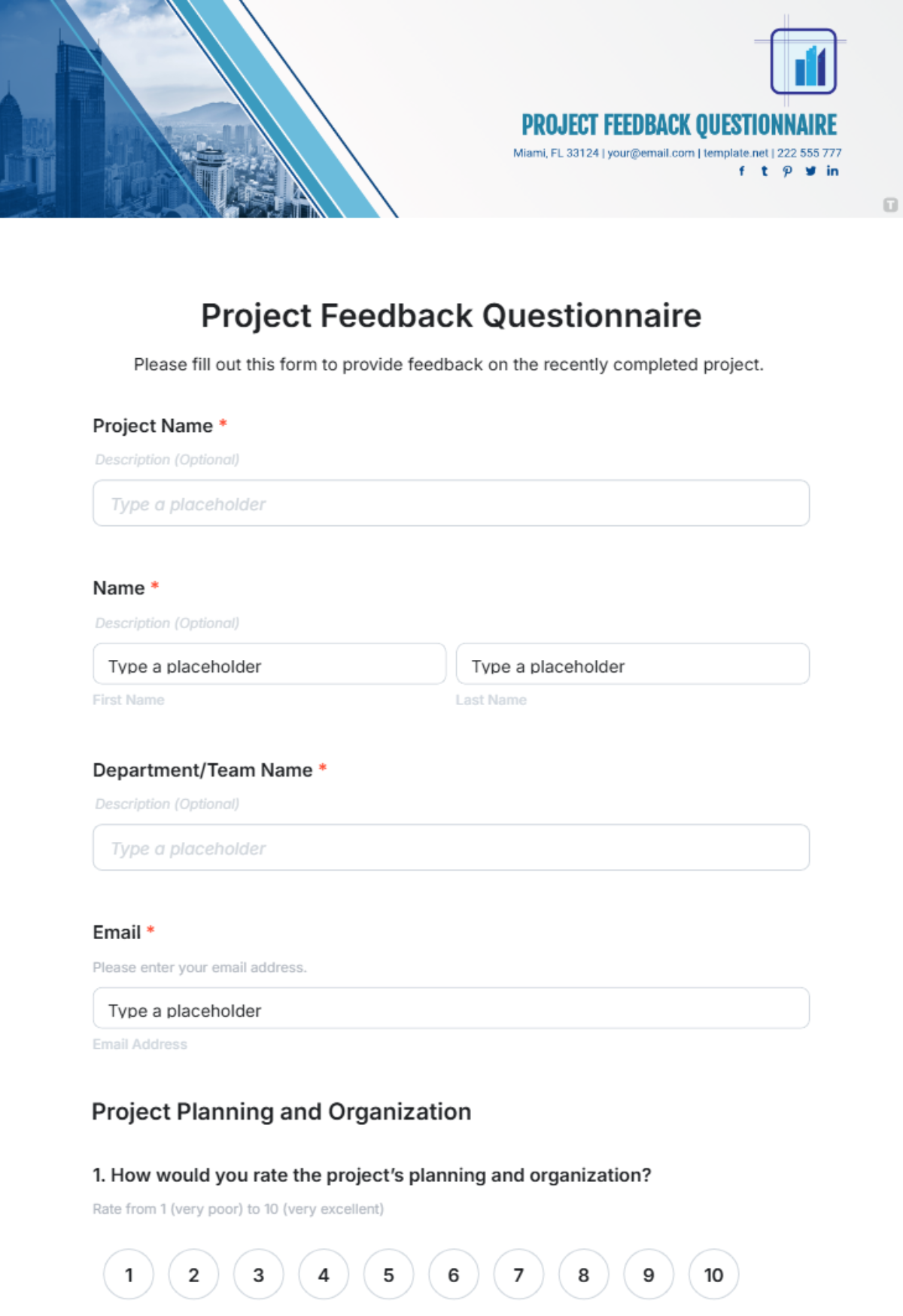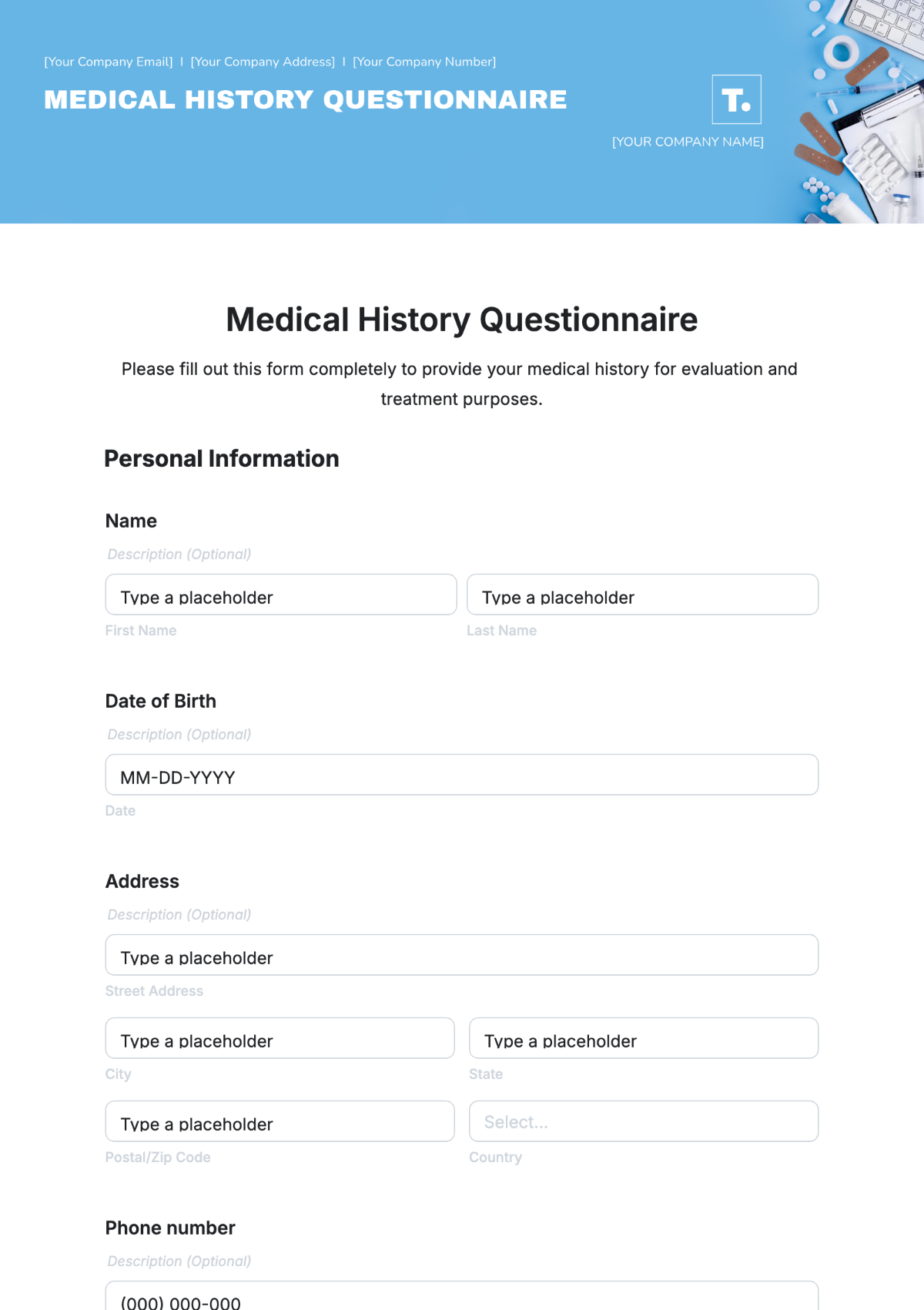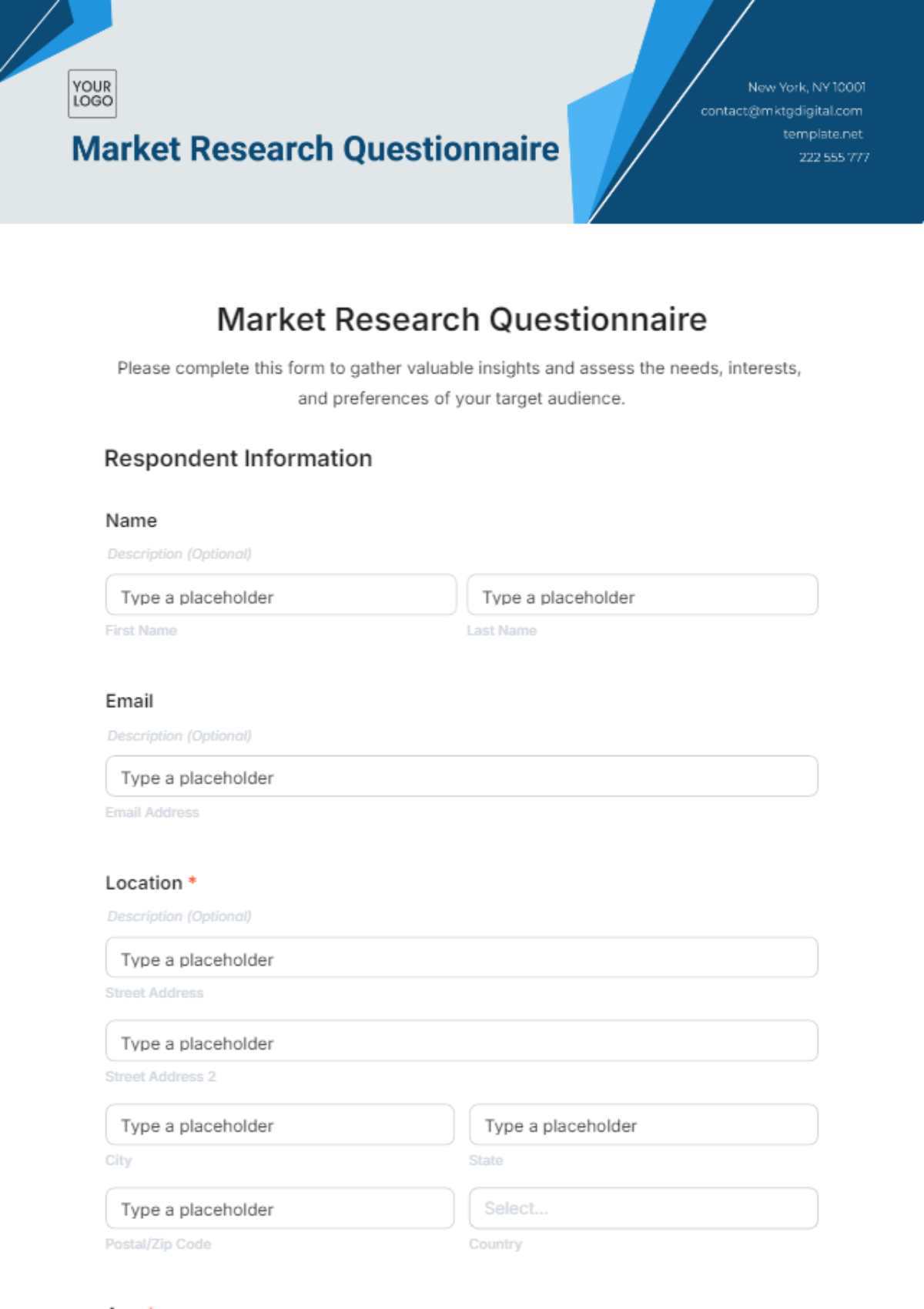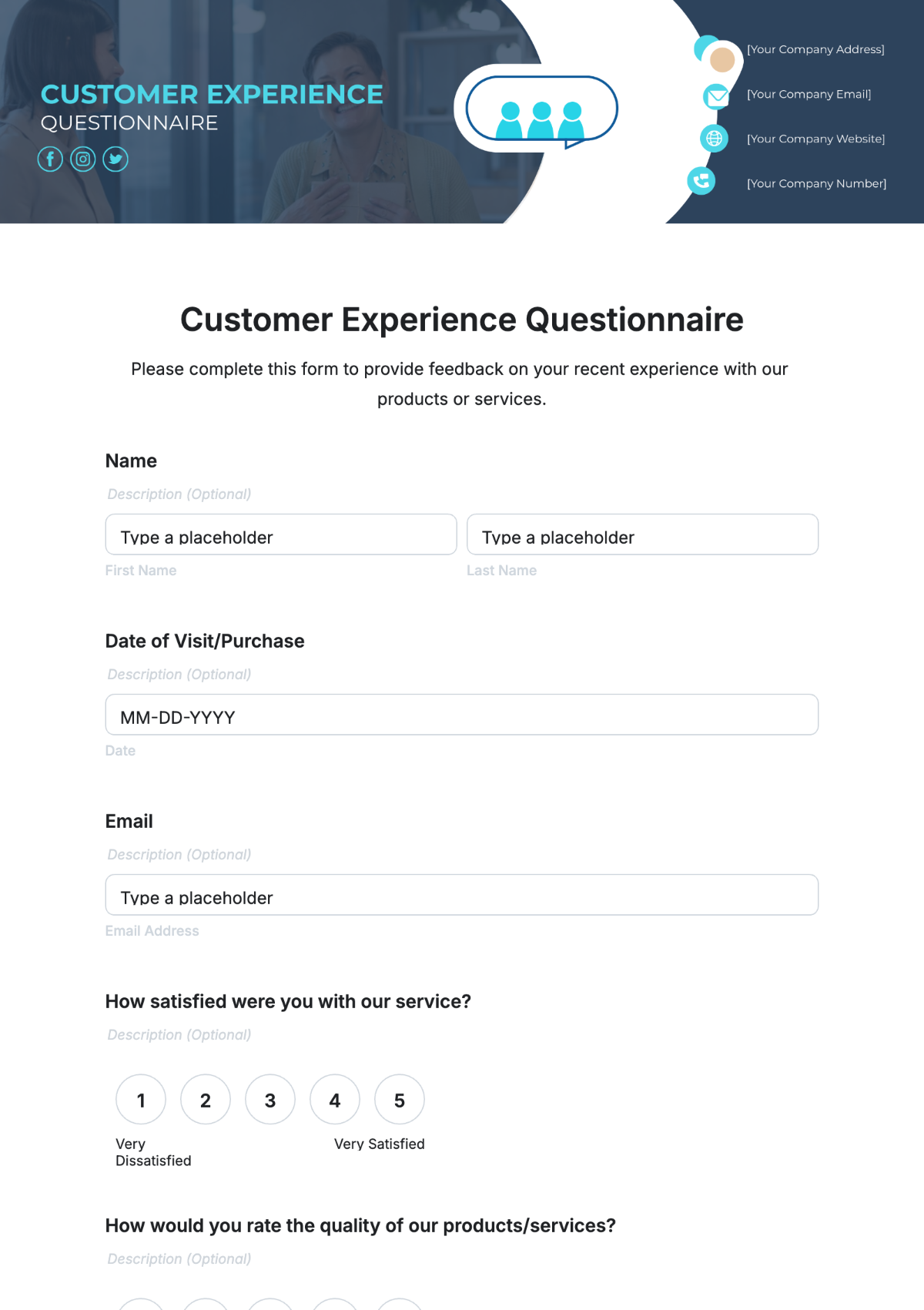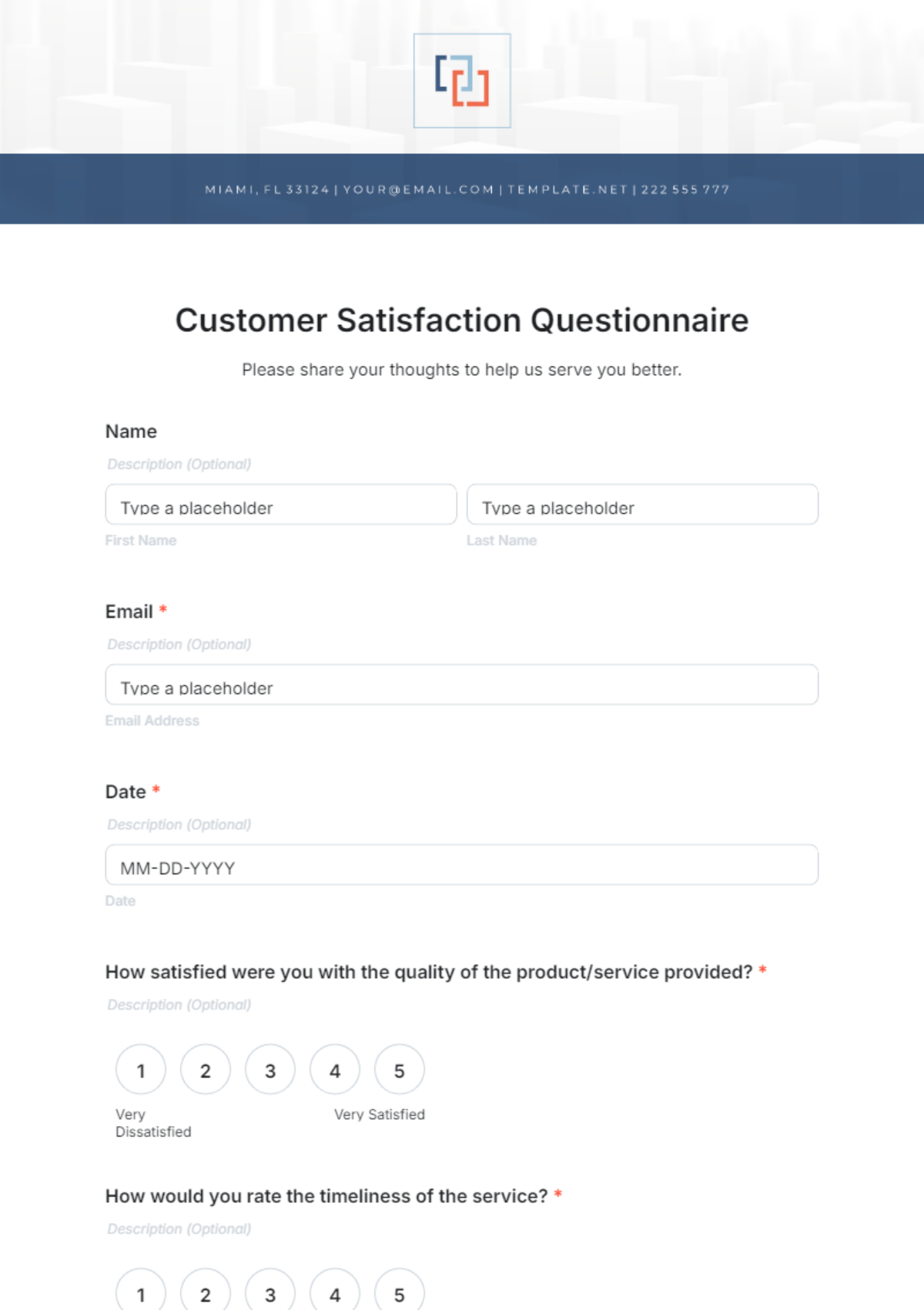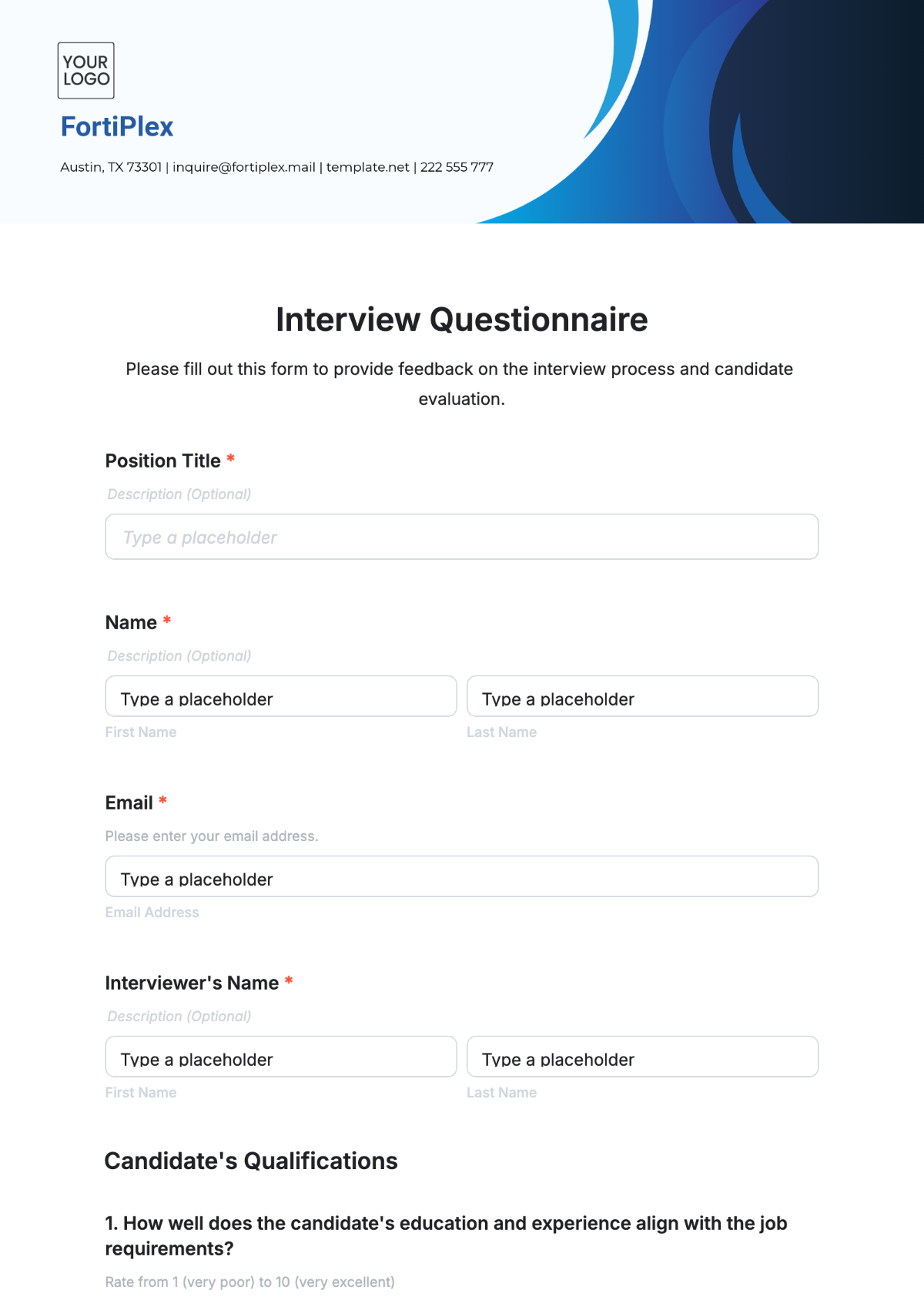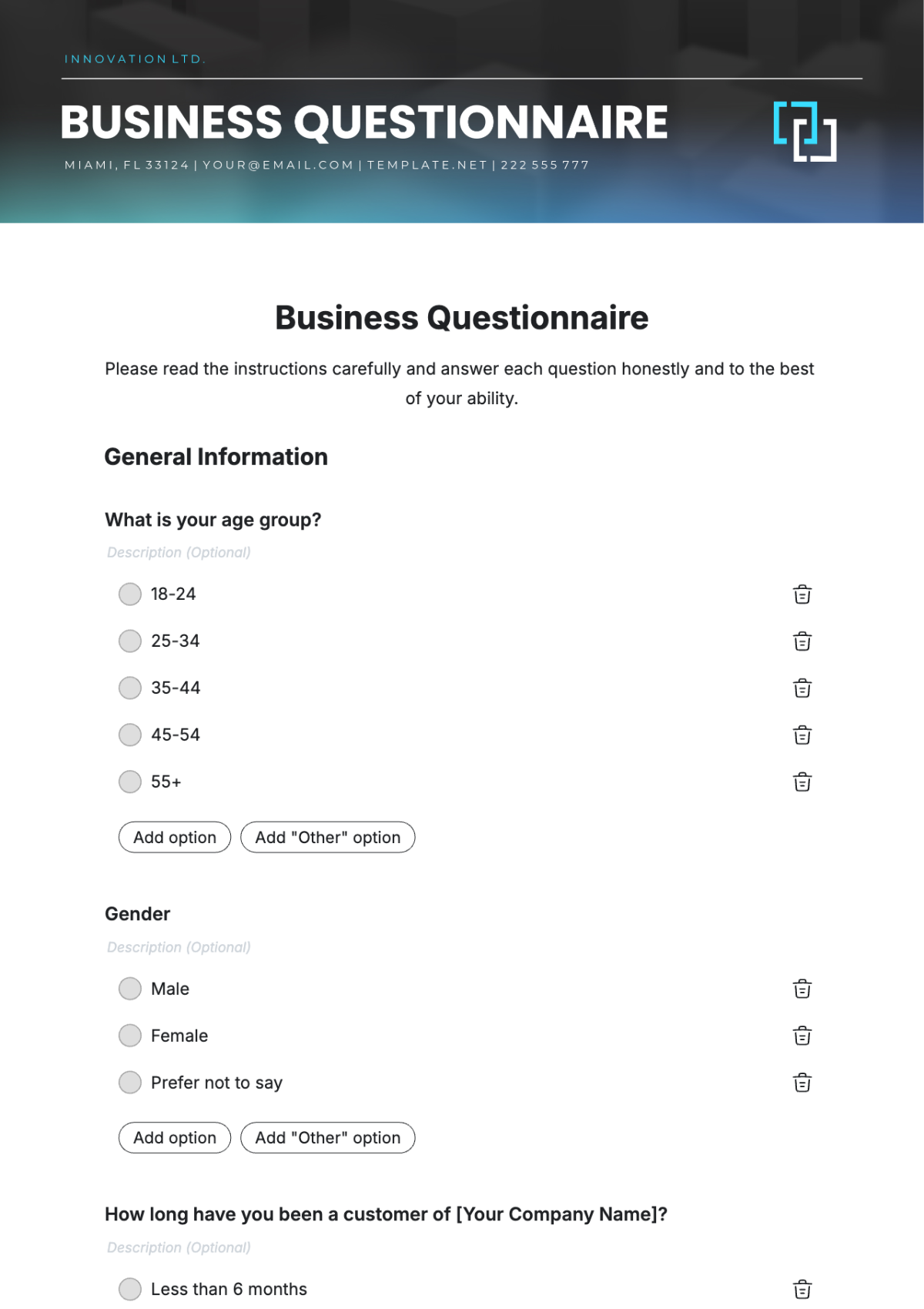Safety Training Questionnaire HR
Dear Employee,
Ensuring the safety of our employees is our top priority. We kindly request you to complete this Safety Training Questionnaire to help us gauge your understanding of workplace safety protocols. Your responses will remain confidential and will be used for the sole purpose of improving our safety training programs. Please answer each question to the best of your ability.
Employee Information
Section 1: General Safety Knowledge
1. What is the primary goal of our company's safety program?
A. To reduce energy consumption
B. To increase profits
C. To protect the environment
D. To ensure the safety and well-being of employees
2. When should you report a safety concern or incident to your supervisor?
A. Only if it results in an injury
B. When you have free time
C. Immediately, regardless of the severity
D. At the end of the day
3. What is PPE, and when should you use it?
A. Personal Payment Equipment, always
B. Public Property Exhibition, during meetings only
C. Personal Protective Equipment, as required for specific tasks
D. Private Property Exemption, never
Section 2: Emergency Procedures
4. In the event of a fire alarm, what should you do?
A. Wait to see if it's a real emergency
B. Continue working, as it's probably a drill
C. Evacuate the building using the nearest exit
D. Call a colleague to check if it's a false alarm
5. Where are the nearest fire extinguishers located in your work area?
A. I don't know
B. In the breakroom
C. In clear, designated locations, and I know their whereabouts
D. Fire extinguishers are not necessary
Section 3: Chemical Safety
6. What is an SDS (Safety Data Sheet), and why is it important?
A. A Software Development System, irrelevant to my work
B. A Sales and Distribution Strategy, useful for marketing
C. A Safety Data Sheet, containing information about hazardous chemicals and their safe handling
D. A Scientific Discovery Statement, not applicable to my role
7. How should you handle a chemical spill or exposure to hazardous substances?
A. Ignore it and hope it goes away
B. Inform your coworkers and continue working
C. Immediately report it to your supervisor and follow established procedures for cleanup and first aid, if necessary
D. Take a picture and post it on social media
Section 4: Workplace Ergonomics
8. What is workplace ergonomics, and why is it important?
A. A type of exercise program, useful for fitness enthusiasts
B. The study of economics in the workplace, relevant to management only
C. The science of designing workspaces, tools, and tasks to fit the capabilities of employees, important for preventing injuries and discomfort
D. A term for flexible work hours
Section 5: Personal Health And Hygiene
9. Why is it important to practice good personal hygiene in the workplace?
A. It helps reduce the cost of cleaning supplies
B. It promotes a professional image
C. It's only important in the food industry
D. Personal hygiene is not relevant to the workplace
10. How should you dispose of used personal protective equipment (PPE) like gloves and masks?
A. Throw them on the floor
B. Place them in the nearest trash bin
C. Dispose of them according to the designated waste disposal procedures
D. Keep using them until they fall apart
Thank you for taking the time to complete this Safety Training Questionnaire. Your commitment to safety is greatly appreciated, and your feedback will help us enhance our safety programs for the benefit of all employees.
Please return this questionnaire to your supervisor or the HR department by September 30, 2050.
Your safety matters!
[Your Name]
HR Templates @ Templates.net

